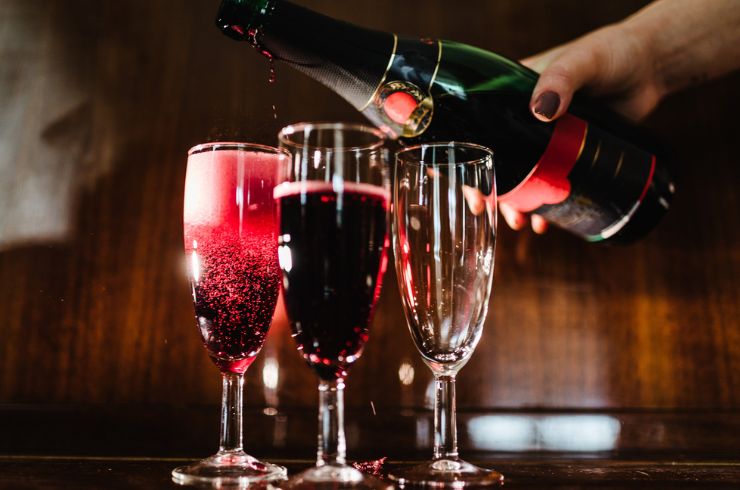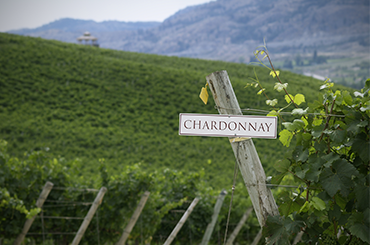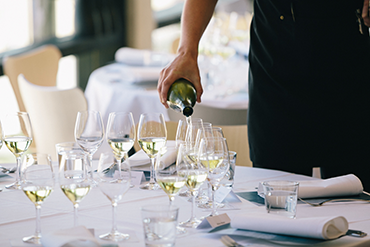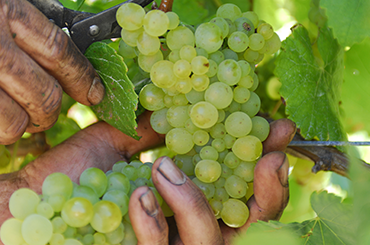- Western Australia wine country is synonymous with some of the best-known examples of chardonnay in the country. These classic wines are beloved for their complex, bold personalities and their ability to be endlessly shaped, both in the winery and in the vineyard. Here, three chardonnay-making masters talk nuances of the production process and defining classic Australian styles.
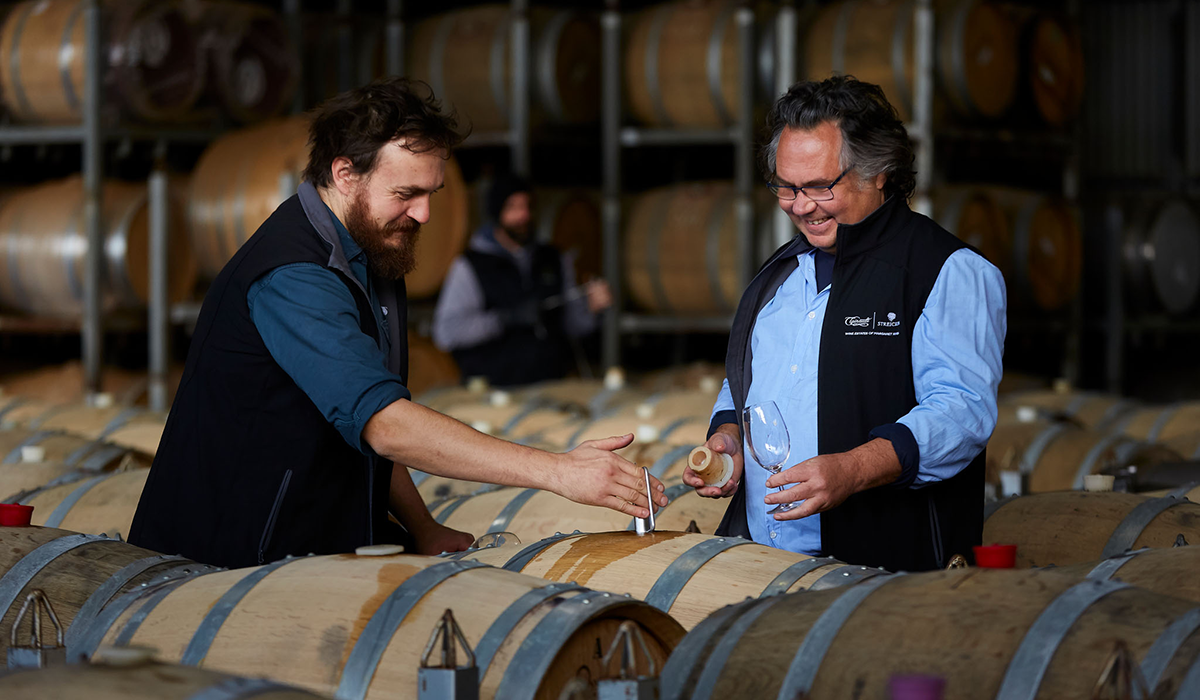
Bruce Dukes (right) pictured with assistant winemaker, Remi Guise.
Bruce Dukes – Clairault Streicker, WAH. What is your approach to working with this variety?
B. My philosophy is to capture the strengths of the fruit personality of Margaret River. The traditional winemaking approaches are bespoke for each fruit and fine-tuned based on the observed composition of the fruit, and the desire to translate it into meaningful wine styles. These styles are literally made from the ground up. The intention is that the pristine fruit dominates the conversation, barely allowing the winemaking a word. The Wilyabrup fruit from our Ironstone vineyard excites me as it offers a textural and flavour element, which is apparent from the juice stages.
H. What is unique about your product and how it is made?
B. The fruit. Our Ironstone Vineyard distinguishes this wine. It was planted 1985 and the high-density planting creates a climate of its own, further softening the gentle maritime climate of Margaret River. The high-density planting causes competition for water and nutrients, hence the vine roots to explore the full depth of the soil profile. The reward is flavoursome fruit with generous textures. Our 2018 Ironstone Chardonnay is best enjoyed slightly chilled, accompanied by fresh air, or a tradition roast chicken and roast veggies. The succulent natural acidity of the wine provides refreshment of the taste buds, keeping all the flavours precise and pure.

Matt Byrne – Evans & Tate, WA
H. What defines a classic style of chardonnay?
M. The impact of flavour as soon as it hits the palate is essential. All those fleshy, ripe stone fruits with some citrus and melon flavours make for a quintessential chardonnay, with the best ones having flavour that persists for what seems like an eternity – add a licking of classy toasty oak, some fermentation complexity and a textural element from barrel maturation on lees and voila! Vine health and balance is the starting point for our wines and our top vineyards achieve this by simply being planted in the right location from the start
H. What is unique about your product and how it is made?
M. Our style is tight, with great drive in terms of fruit flavour and texture, with citrus and flinty notes on the palate, finishing dry and talcy. This style comes in part from the use of 500L French oak puncheons to mature for a year, followed by a further year on lees in tank – a couple of rarely seen winemaking techniques. We are constantly experimenting with the timing of harvest to push retention of natural acidity and longevity of our chardonnay, whilst ensuring flavours are still ripe and long. You don’t really know if you are successful until a few years down the track, so it’s a long-term project.

Nic Bowen – Howard Park, WA
H. Why do you love working with this variety?
N. Chardonnay is the most wonderfully versatile variety – it’s the one you want to be left on a desert island to drink. You can make it into sparkling, you can make it into a quaffable-yet-old-school buttery wine or into the most refined and ethereal early picked Chablis style. It really is a grape that enjoys the winemakers touch, whether it be a bit of Burgundian oak, batonnage or high-solid wild ferments. Chardonnay draws upon it all and makes it shine.
H. How has your winemaking processed evolved?
N. I think my style has really changed according the fruit I’m working with. Some regions can handle, and need, more of the winemaker’s hand to make them shine. Others you just stand back and let it walk through the winery. Given I have some pretty special fruit to work with I’m standing back more these days, reducing oak influence and relying more on natural ferments and constantly tasting how the wine is progressing. Allingham is the best chardonnay we make. Only the best grapes are handpicked from south-facing blocks on our vineyard located in the sub-region of Karridale in Margaret River. Never a wine of extremes, the Allingham Chardonnay is always nuanced and full of subtleties, surprise and harmony.
This article was produced in partnership with the featured wineries.
Top image credit: Wine Australia / Ian Routledge
